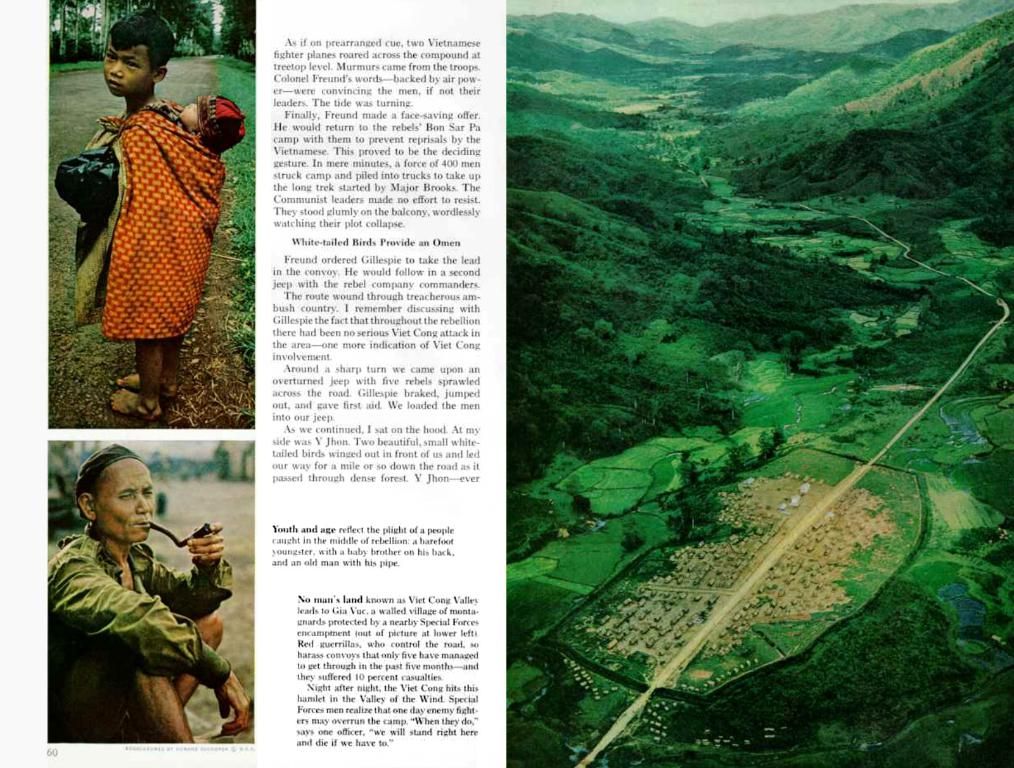Woodcraft Revival: Construction and Production Enter a New Era
In an exciting leap forward, the construction industry may soon see structures like wind turbine towers, furniture, and even apartment buildings made predominantly using wood, thanks to a innovative material called Laminated Veneer Lumber (LVL). This material, while used in Lithuania for over a decade, is undergoing a transformation from a niche technology to a mainstream alternative to steel and concrete, driven by the growing demand for sustainability.
One company pioneering the use of LVL is VMG Lignum. Based on their observations, the potential of this material is boundless, with applications in the building, energy, and furniture sectors.
In the realm of sustainability, LVL is a game changer. This strong and reliable product, consisting of layers and glued wood veneer, is already redefining construction, furniture production, and energy, even though it's still considered novel in Lithuania. In Western countries, LVL has been in use for over five decades, but local markets still struggle with shedding lingering stereotypes.
Arnas Januska, Head of Sales at VMG Lignum, explains that LVL excels in terms of wood utilization efficiency. Compared to traditional sawn timber, more usable product can be obtained from the same log, and the material enables lighter yet stronger structures. Furthermore, the material guarantees predictable fire-resistance properties, a feature many may mistakenly assume isn't as safe for structures as metal.
Another fascinating development is the use of LVL in wind turbine towers, traditionally made from concrete or steel. Due to high CO2 emissions and complex transportation, more European manufacturers are exploring eco-friendly alternatives, such as LVL. According to Januska, these towers, lighter, easier to transport, and quicker to assemble, can be as durable as metal towers but with a significantly lower environmental impact.
Beyond wind turbines, LVL is also ideal for prefabricated (panel and modular) buildings. The material's superior length, shape stability, and strength ensure both quality and production speed, essential elements in today's fast-paced construction projects.
VMG Lignum isn't just using LVL in furniture and frame construction. It also gets employed in concrete formwork, scaffolding, bridge structures, and even doors and staircases due to its strength, easy workability, and compatibility with other wood products.
Surprisingly, even the largest furniture manufacturers are shifting from sawn timber to engineered wood. Januska boasts that one of their top clients plans to use LVL in around 80% of sofa-bed frames, signaling a significant shift. It's estimated that up to a third of all LVL production could soon be channeled to the furniture sector.
Despite its technological potential, LVL's expansion in Lithuania faces challenges. The first hindrance is a lack of knowledge and awareness. While architects are eager to innovate, they often encounter engineers without the necessary design and calculation skills. Januska emphasizes that, to foster efficient timber-based design, education reform for young professionals is necessary.
Another barrier is overly cautious regulation, particularly concerning fire safety requirements. Europe's green policy is pushing sustainable, efficient materials to the forefront. Yet, Lithuanian institutions remain hesitant to fully embrace new materials like LVL.
The new EU Deforestation Regulation (EUDR) also poses challenges. This regulation requires full traceability of timber, from harvest to processing, meaning more documentation and greater accountability for manufacturers. VMG Lignum has already taken steps to address this, such as adopting lower-emission adhesives, investing in automation, and implementing raw material traceability systems.
While Lithuania is still finding its way, countries like Scandinavia and the Netherlands show that LVL can become an industry standard, not just a niche solution. Meanwhile, Lithuanian manufacturers are eyeing international markets like the US and Australia, where wooden construction is widespread and sustainability norms favor advanced materials.
- The innovative material, Laminated Veneer Lumber (LVL), is expected to revolutionize not only the construction sector but also the energy and furniture industries, according to VMG Lignum, a company pioneering its use.
- In addition to wind turbine towers, LVL is being explored as an eco-friendly alternative in furniture production, especially by the largest furniture manufacturers seeking to shift from sawn timber to engineered wood.
- Apart from facing challenges such as limited knowledge and overly cautious regulation, Lithuania's LVL industry can potentially become an industry standard, like in Scandinavia and the Netherlands, by capitalizing on global markets like the US and Australia where wooden construction is common and sustainability is highly valued.





